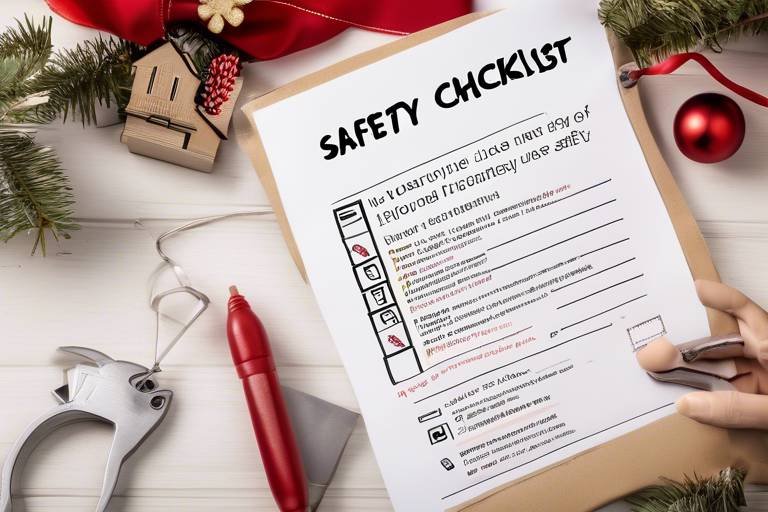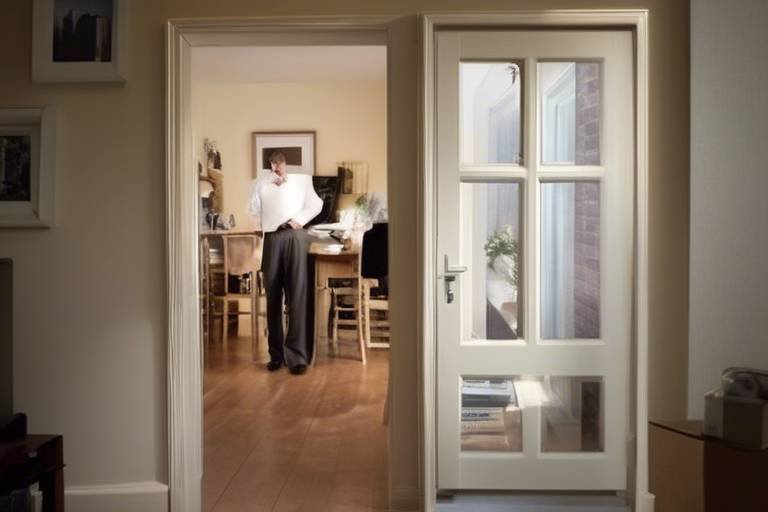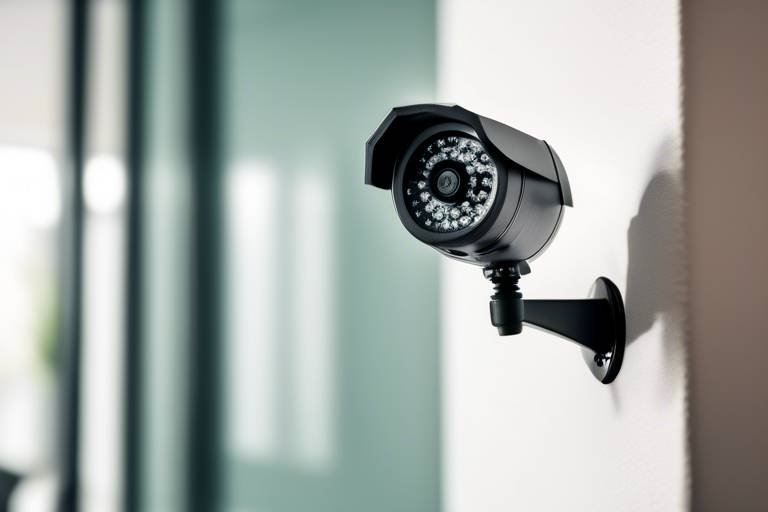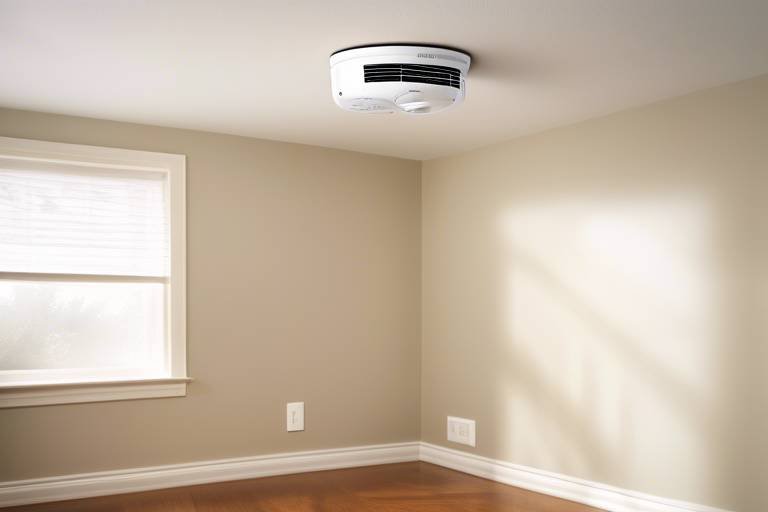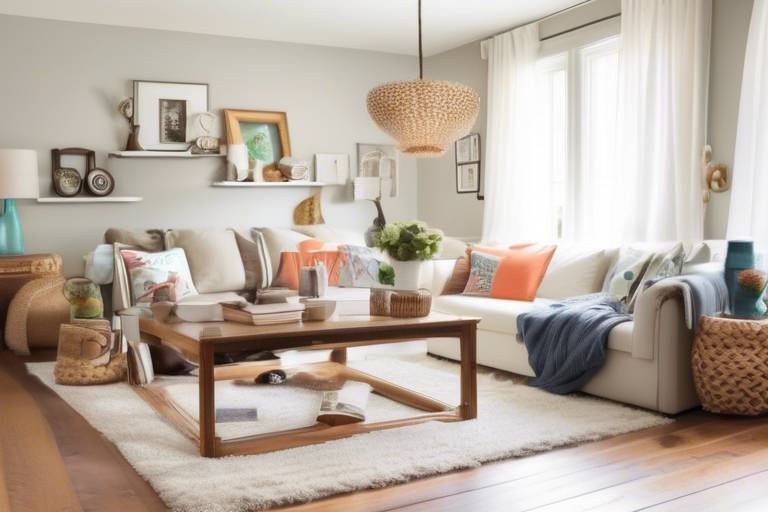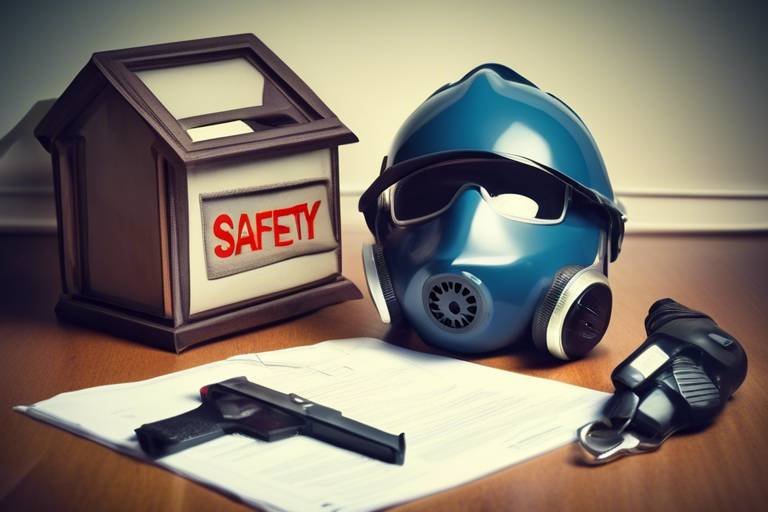Preventing Falls at Home – Safety Tips
Falls at home can be a serious concern, especially for the elderly and those with mobility challenges. The good news is that by implementing some simple safety tips, you can create a much safer environment for yourself and your loved ones. Imagine your home as a sanctuary, a place where you feel secure and at ease. By taking proactive measures, you can significantly reduce the risk of falls and ensure that your home remains a haven.
Before we dive into solutions, it's crucial to understand what contributes to falls in the first place. Common fall risks can be lurking in unexpected places. For instance, loose rugs, cluttered walkways, and poor lighting are just a few culprits that can lead to accidents. Have you ever tripped over a toy left on the floor or struggled to see the steps because of dim lighting? These scenarios are all too common. By recognizing these hazards, you can take the necessary steps to mitigate them. It's all about being aware and making small changes that have a big impact.
Making modifications in your home can be a game changer when it comes to fall prevention. Think of it as upgrading your home’s safety features. Simple changes, like installing grab bars in strategic locations, can provide crucial support when moving around. Additionally, improving lighting can illuminate dark corners and stairways, making it easier to navigate your space. And let’s not forget about removing tripping hazards—this can include decluttering spaces and securing loose cords. The goal is to create an environment that is not only functional but also safe.
The bathroom is often considered one of the most hazardous areas in the home. With wet surfaces and various obstacles, it’s easy to see why. To enhance safety in this space, consider incorporating non-slip mats and even shower chairs for added stability. These small additions can make a world of difference. Think about it: would you feel more secure stepping out of the shower with a non-slip mat beneath your feet? Absolutely! It’s all about creating a safe landing zone.
When it comes to flooring, the right choice can be crucial for preventing slips. Non-slip materials are designed specifically to provide better traction, especially in areas like bathrooms and kitchens where spills are more common. Imagine walking confidently across your kitchen floor without worrying about slipping. By opting for non-slip flooring options, you are investing in a safer home environment. Not only does it reduce the risk of falls, but it also gives you peace of mind.
Grab bars can be a lifesaver in both bathrooms and stairways. Installing them in key locations can provide essential support when you need it most. Consider placing grab bars near the toilet, in the shower, and along stairways. This way, you have something to hold onto whether you’re getting in or out of the shower or climbing the stairs. It’s like having an extra pair of hands to help you navigate your home safely. Remember, safety should never be an afterthought; it should be a priority!
Stairs can be particularly treacherous if not properly maintained. One of the simplest yet most effective strategies for improving stair safety is ensuring adequate lighting. A well-lit stairway can prevent many accidents. Additionally, installing handrails on both sides of the stairs can offer extra support. Think about it: would you feel more secure climbing stairs with something to hold onto? Absolutely! Taking these steps can make your home much safer.
Engaging in regular exercise is another fantastic way to reduce fall risk. Strength and balance training can be especially beneficial, helping to improve your overall stability. Picture this: a few simple exercises integrated into your daily routine can lead to greater confidence in your movements. Whether you’re a seasoned athlete or just starting out, there are suitable exercises for every age group and fitness level. It’s all about finding what works for you and committing to it!
Balance and strength training exercises can be easily incorporated into your daily life. Activities like yoga, tai chi, or even simple strength exercises can enhance your stability and coordination. Think of these exercises as building a solid foundation for your body, much like laying down a strong base for a house. The stronger your foundation, the less likely you are to experience falls.
Don’t forget that many communities offer resources aimed at fall prevention. Local programs and classes often focus on improving mobility and safety at home. These can be invaluable in providing education and support to those at risk of falls. Check with community centers or health organizations to see what’s available in your area. Engaging with others in these programs can also foster a sense of community and shared purpose.
- What are the most common causes of falls at home? Falls can occur due to various factors, including poor lighting, cluttered walkways, and slippery surfaces.
- How can I make my bathroom safer? Consider installing grab bars, using non-slip mats, and ensuring adequate lighting.
- What exercises can help prevent falls? Balance and strength training exercises, such as yoga and tai chi, are effective in improving stability.
- Are there community resources for fall prevention? Yes, many communities offer classes and programs focused on enhancing mobility and safety.

Understanding Fall Risks
When it comes to ensuring a safe home environment, understanding fall risks is crucial. Many people might not realize that their own homes can harbor hidden dangers that could lead to falls, especially for the elderly or those with mobility issues. The first step in preventing falls is to identify these risks. Common hazards include cluttered walkways, loose rugs, inadequate lighting, and uneven surfaces. By recognizing these dangers, you can take proactive measures to mitigate them, creating a safer living space.
One of the most significant contributors to falls is the presence of tripping hazards. These can be anything from electrical cords lying across the floor to toys scattered in a pathway. It's essential to keep floors clear and organized. Additionally, consider the surfaces you're walking on; slippery floors, especially in areas like kitchens and bathrooms, can be particularly treacherous. The right kind of flooring can make a world of difference in preventing slips and falls.
Another aspect to consider is lighting. Poorly lit areas can make it difficult to navigate your home safely. Ensure that all rooms, hallways, and staircases are well-lit. Installing motion-sensor lights can be a great idea, especially for those late-night trips to the bathroom. You might also want to consider using brighter bulbs or adding additional light sources in dim areas.
Moreover, it's not just the physical environment that poses risks; certain health issues can also increase the likelihood of falls. Conditions such as vision impairment, muscle weakness, or balance disorders can significantly heighten fall risks. Regular check-ups with healthcare professionals can help in identifying these issues early. They can also provide guidance on exercises and therapies to improve strength and balance, which are vital in preventing falls.
Lastly, don’t forget about the importance of community awareness. Engaging with local resources can provide valuable information on fall prevention. Many communities offer classes focused on improving mobility and safety at home. These programs not only educate but also create a support network for individuals looking to enhance their living conditions.
In summary, understanding fall risks is about being aware of both your environment and your health. By taking the time to assess your home and address potential hazards, you can create a safer space for yourself and your loved ones.

Home Modifications
Making simple modifications in your home can significantly reduce fall risks and create a safer environment for everyone, especially the elderly and those with mobility challenges. Think of your home as a fortress; every small change you make is like adding a layer of protection against potential dangers. You wouldn’t leave a door unlocked, so why leave your home vulnerable to falls? By identifying and addressing common hazards, you can ensure that your living space is as secure as possible.
One of the most effective modifications is to install grab bars in key areas such as the bathroom and stairways. These sturdy bars provide essential support when moving around and can be a lifesaver during those wobbly moments. Imagine having a trusty sidekick ready to help you navigate tricky spots! It's crucial to place these bars at the right height and location—typically near toilets and in the shower—to maximize their effectiveness.
Another critical aspect of home safety is improving lighting. Poorly lit areas can hide hazards that lead to falls. Consider replacing dim bulbs with brighter LED lights, and don’t forget about the importance of nightlights in hallways and bedrooms. You want to illuminate your path like a runway, guiding you safely through your home, especially during the night. Additionally, using motion-sensor lights can provide automatic illumination when you need it most.
Removing tripping hazards is another simple yet powerful modification. Take a stroll through your home and look for items that could cause you to trip. These might include:
- Loose rugs or carpets
- Clutter on the floors
- Wires or cords running across walkways
By securing rugs with non-slip backing and ensuring that walkways are clear, you can significantly reduce the risk of falls. Think of it as decluttering not just your space but also your safety.
In addition to these modifications, consider the flooring in your home. Choosing the right materials can make a world of difference. Non-slip flooring options, such as textured vinyl or rubber, can provide better traction, especially in areas prone to moisture, like the kitchen and bathroom. This is akin to wearing shoes with good grip; it helps you stay grounded and prevents slips. Installing these materials may require a bit of investment, but the peace of mind they offer is priceless.
Lastly, don't forget about the importance of regular maintenance. Over time, wear and tear can create new hazards. Regularly check your home for any loose floorboards, broken tiles, or loose handrails, and address these issues promptly. Think of it as routine check-ups for your home; just like your health, a well-maintained home is less prone to accidents.
By making these home modifications, you’re not just enhancing safety; you’re also fostering independence for yourself and your loved ones. Remember, a few thoughtful changes can transform your home into a safe haven—one that protects against the unexpected tumbles of life.

Bathroom Safety
The bathroom is often a hotbed for accidents, especially for the elderly and those with mobility challenges. With its slick surfaces and various hazards, it’s crucial to take a closer look at how we can enhance safety in this space. Imagine stepping into a serene oasis, only to be met with the potential danger of slipping on wet tiles. Sounds daunting, right? But fear not! There are several effective strategies to transform your bathroom into a safer haven.
First and foremost, non-slip mats are a game changer. Placing these mats both inside and outside the shower or bathtub can significantly reduce the risk of falls. Think of them as your bathroom's safety net, providing extra grip when you need it most. Additionally, consider using non-slip adhesive strips on the bottom of your tub or shower. These simple additions can make a world of difference!
Another essential aspect of bathroom safety is the installation of grab bars. These sturdy bars provide a reliable support system, allowing individuals to stabilize themselves while entering or exiting the bath or shower. It’s best to install grab bars near the toilet, tub, and shower areas. Not only do they enhance safety, but they can also foster a sense of independence for those who may feel vulnerable in such spaces.
To illustrate the importance of these modifications, let’s take a look at the following table, which outlines the benefits of various bathroom safety features:
| Feature | Benefit |
|---|---|
| Non-Slip Mats | Reduces slipping hazards on wet surfaces |
| Grab Bars | Provides support and stability when moving |
| Shower Chairs | Allows for safe bathing while seated |
| Raised Toilet Seats | Makes sitting down and standing up easier |
Additionally, consider incorporating shower chairs for those who may struggle with standing for long periods. These chairs can provide a safe place to sit while bathing, reducing the chance of losing balance. Similarly, raised toilet seats can help alleviate the strain of sitting down and standing up, making the entire process much easier and safer.
Lastly, let’s not overlook the importance of proper lighting in the bathroom. A well-lit space can help prevent accidents caused by poor visibility. Installing motion-sensor lights or brighter bulbs can illuminate key areas, ensuring that you can see where you’re stepping, even in the early morning hours.
In summary, enhancing bathroom safety is not just about preventing falls; it’s about creating a comfortable and secure environment that allows everyone to enjoy their personal space without fear. By implementing these simple yet effective modifications, you can transform your bathroom into a sanctuary of safety.
- What are the most common causes of falls in the bathroom?
Wet surfaces, inadequate lighting, and lack of support features are primary causes of bathroom falls. - How can I make my bathroom safer without major renovations?
Simple additions like non-slip mats, grab bars, and shower chairs can significantly enhance safety. - Are there specific grab bars recommended for bathrooms?
Look for grab bars that are at least 1.25 inches in diameter and can support a weight of at least 250 pounds. - How often should I check the safety features in my bathroom?
Regularly check all safety features, at least once every few months, to ensure they are secure and functioning properly.

Non-Slip Flooring
When it comes to preventing falls at home, one of the most crucial elements to consider is the type of flooring you have. Imagine walking through your home and suddenly slipping on a slick surface; it can happen in the blink of an eye! Non-slip flooring options are designed to provide better traction, reducing the risk of slips and falls, especially in high-risk areas like the kitchen and bathroom. Not only does this type of flooring offer safety, but it can also add an aesthetic appeal to your home.
There are several materials available that can help keep you and your loved ones safe. For instance, vinyl flooring is a popular choice because it comes in a variety of styles and textures, providing both beauty and functionality. Additionally, tile flooring with a textured surface can significantly reduce the chance of slipping. If you're considering a renovation or a new flooring installation, it's essential to weigh your options carefully.
Here are some of the most effective non-slip flooring materials:
- Rubber Flooring: Often used in gyms and play areas, rubber flooring is incredibly slip-resistant and provides a soft landing if falls do occur.
- Textured Vinyl: This type of vinyl has a textured surface that helps prevent slips, making it ideal for bathrooms and kitchens.
- Laminate with Anti-Slip Coating: Some laminate options come with a special coating that enhances grip, reducing the risk of falls.
- Carpet Tiles: These can add warmth to a room while also providing traction. Just ensure that they are securely installed to avoid any loose edges that could become tripping hazards.
When selecting non-slip flooring, consider the following factors:
| Material | Benefits | Best Use Areas |
|---|---|---|
| Rubber | Excellent grip, cushioned feel | Basements, gyms, play areas |
| Textured Vinyl | Variety of styles, easy to clean | Bathrooms, kitchens, laundry rooms |
| Laminate | Affordable, aesthetically pleasing | Living rooms, bedrooms |
| Carpet Tiles | Warmth, sound absorption | Living spaces, bedrooms |
It's important to remember that while non-slip flooring can significantly reduce the risk of falls, it should be complemented with other safety measures. For example, ensuring that the flooring is kept clean and free from spills is vital. Regular maintenance can help keep the surfaces in top condition, reducing the likelihood of accidents. So, as you consider your flooring options, think about how they can contribute to a safer home environment. After all, a little foresight can go a long way in preventing those unexpected tumbles!
Q: What are the best materials for non-slip flooring?
A: Some of the best materials include rubber, textured vinyl, laminate with anti-slip coatings, and carpet tiles. Each has its unique benefits depending on the area of your home.
Q: Can I install non-slip flooring myself?
A: While some non-slip flooring options can be installed as DIY projects, others may require professional installation for optimal safety and performance. Always consult with a professional if you're unsure.
Q: How can I maintain non-slip flooring?
A: Regular cleaning is essential. Use non-slip cleaning products and ensure that spills are wiped up immediately to maintain traction.

Grab Bars Installation
Installing grab bars in your home is a crucial step towards enhancing safety, especially in areas prone to falls, like bathrooms and stairways. These sturdy fixtures provide essential support, allowing individuals to maintain their balance and stability while moving around. When considering grab bars, it's vital to think about the location, size, and type of bars that best suit your needs. The installation process might seem daunting, but with the right tools and guidance, it can be a straightforward task.
First and foremost, you should assess where grab bars will be most beneficial. In the bathroom, for instance, consider placing them near the toilet and inside the shower or bathtub. A good rule of thumb is to install them at a height that is comfortable for the user, typically around 33 to 36 inches from the floor. This height helps ensure that they can easily reach for support when needed.
Next, let's talk about the materials used for grab bars. Stainless steel is often recommended due to its durability and resistance to rust, making it perfect for wet environments. Additionally, grab bars come in various styles and finishes, allowing you to choose options that blend seamlessly with your bathroom decor. It's essential to select bars that are at least 1.25 inches in diameter, as this size provides a secure grip.
When it comes to the actual installation, follow these steps:
- Gather Your Tools: You'll need a drill, screws, a level, and a stud finder.
- Locate the Studs: Use a stud finder to locate the wall studs, as grabbing onto a stud will provide the necessary support.
- Mark the Placement: Use a pencil to mark where you plan to install the grab bars.
- Drill Holes: Carefully drill holes into the marked spots, ensuring they align with the studs.
- Secure the Bars: Attach the grab bars using the screws provided, ensuring they are tightly secured.
It's also essential to test the grab bars after installation. Give them a firm tug to ensure they are securely anchored. If they feel loose or unstable, consider re-evaluating your installation method or consulting a professional. Remember, the goal is to create a safe environment where users can feel confident and secure.
In addition to bathrooms, grab bars can be beneficial in stairways. Installing them on both sides of the stairs provides extra support when ascending or descending, reducing the risk of falls. When placing grab bars on stairs, ensure they are positioned at a height that is easy to reach and spaced adequately to allow for a comfortable grip.
Overall, grab bars are a simple yet effective solution to enhance safety in your home. By taking the time to install them correctly, you can create a more secure living environment for yourself and your loved ones. Don't forget to educate family members about their proper use to maximize safety benefits!
Q: How do I know where to install grab bars?
A: Assess high-risk areas such as bathrooms and stairways. Grab bars should be installed near toilets, bathtubs, and stairs for maximum safety.
Q: What is the best material for grab bars?
A: Stainless steel is highly recommended due to its durability and resistance to rust, making it ideal for wet environments.
Q: Can I install grab bars myself?
A: Yes, with the right tools and guidance, installing grab bars can be a straightforward DIY project. Ensure they are anchored to wall studs for safety.
Q: How high should grab bars be installed?
A: Grab bars are typically installed 33 to 36 inches from the floor for easy access.

Stair Safety
When it comes to home safety, stairs often pose one of the greatest risks, especially for the elderly or those with mobility issues. Imagine navigating a staircase that feels like a mountain; each step can become a daunting challenge. To prevent falls, it’s crucial to take a proactive approach. Start by ensuring that your stairs are well-lit. A brightly lit staircase can significantly reduce the chances of missteps. Consider installing motion-sensor lights that automatically illuminate the area when someone approaches.
Another essential aspect is the handrails. Having sturdy handrails on both sides of the staircase provides vital support for anyone ascending or descending. But it’s not just about having handrails; they must be installed at the correct height and securely anchored to withstand weight. A good rule of thumb is to have them positioned between 34 to 38 inches above the stairs. This height allows most individuals to grasp them comfortably, providing that extra sense of security.
Additionally, it’s important to keep the stairs free of clutter. Items like shoes, bags, or even decorative objects can create tripping hazards. Regularly check your stairway to ensure it remains clear. If you have children or pets, it’s wise to establish a habit of keeping the area tidy. You might even consider using a small basket at the bottom of the stairs for items that need to go upstairs, reducing the temptation to leave things on the steps.
Furthermore, think about the surface of your stairs. Slippery surfaces can be a recipe for disaster. If your stairs are made of wood or tile, consider adding a non-slip coating or using non-slip treads. These additions can provide extra grip, especially in homes where spills are common. If you’re renovating or building, opt for materials that are designed to minimize slipping.
In summary, improving stair safety is a multifaceted approach that involves:
- Ensuring adequate lighting
- Installing secure handrails
- Keeping stairs clutter-free
- Utilizing non-slip surfaces
By implementing these strategies, you can transform your staircase from a potential hazard into a safe passage. Remember, safety is not just about preventing falls; it’s about creating a home environment where everyone can feel secure and confident in their movements.

Regular Exercise
Engaging in is not just a way to stay fit; it’s a powerful tool in the fight against falls, especially for the elderly and those with mobility challenges. Think of your body as a finely tuned machine; if you don’t keep it running smoothly, parts may start to wear out. Regular exercise helps to maintain strength, flexibility, and balance, which are all crucial for preventing falls. But what types of exercises are best? Let’s dive into some options that cater to different ages and fitness levels.
For seniors, activities that focus on balance and strength training can be particularly effective. Imagine trying to balance on one leg while reaching for something on a high shelf; that’s a recipe for disaster if you’re not prepared. Incorporating exercises such as tai chi, yoga, or even simple walking can significantly enhance your stability. Not only do these exercises help in improving physical health, but they also boost confidence. After all, when you feel strong and balanced, you’re less likely to fear falling.
Here’s a quick look at some exercises suitable for different fitness levels:
| Exercise | Fitness Level | Benefits |
|---|---|---|
| Walking | Beginner | Improves cardiovascular health and leg strength |
| Tai Chi | Intermediate | Enhances balance and coordination |
| Yoga | All Levels | Increases flexibility and core strength |
| Strength Training | Advanced | Builds muscle mass and bone density |
Moreover, community resources often provide tailored programs aimed at improving mobility and safety. Many local gyms offer classes specifically designed for older adults, focusing on low-impact exercises that promote safety without compromising on fun. Have you ever thought about joining a community class? Not only will you be working on your fitness, but you’ll also have the chance to meet new people and build a support network.
Incorporating exercise into your daily routine doesn’t have to be daunting. Start small; even a 10-minute walk can make a difference. As you get more comfortable, gradually increase the duration and intensity of your workouts. Remember, consistency is key! Just like watering a plant regularly helps it grow, regular exercise nurtures your body, making it stronger and more resilient against falls.
So, let’s recap: regular exercise not only enhances your physical strength but also boosts your confidence and reduces the fear of falling. Whether you choose to walk, practice tai chi, or join a local fitness class, the important thing is to stay active. After all, a little movement each day can lead to significant improvements in your overall safety at home.
- How often should I exercise to prevent falls? Aim for at least 30 minutes of moderate exercise most days of the week.
- Can I exercise if I have mobility issues? Yes! There are many low-impact exercises and classes designed specifically for those with mobility challenges.
- What type of exercise is best for balance? Tai chi and yoga are excellent choices for improving balance and coordination.
- Should I consult a doctor before starting an exercise program? It’s always a good idea to consult with a healthcare provider, especially if you have existing health concerns.

Balance and Strength Training
When it comes to preventing falls, plays a pivotal role, especially for the elderly and those with mobility issues. Think of your body as a well-tuned machine; just like any machine, it needs regular maintenance to function effectively. Engaging in specific exercises can enhance your stability and strength, making you less prone to slips and trips. But where do you start? The good news is that you don’t need a gym membership or expensive equipment to get moving. Simple exercises can be done right in your living room!
One effective approach is to incorporate balance exercises into your daily routine. These exercises focus on improving your ability to maintain your center of gravity, which is crucial in preventing falls. For instance, standing on one leg while holding onto a chair for support can be a simple yet effective exercise. As you gain confidence, try to let go of the chair for a few seconds. You can also practice walking heel-to-toe in a straight line, which challenges your balance and coordination.
Strength training, on the other hand, is about building muscle and enhancing your overall strength. This doesn’t mean you have to lift heavy weights; bodyweight exercises can be incredibly effective. For example, squats and lunges are fantastic for strengthening your legs, which are essential for maintaining balance. You might also consider using resistance bands, as they are affordable, portable, and versatile. Here’s a quick overview of some exercises you can try:
| Exercise | Description | Frequency |
|---|---|---|
| Chair Stands | Sit on a sturdy chair and stand up without using your hands. Repeat 10 times. | 3 times a week |
| Wall Push-Ups | Stand an arm's length from a wall, place your hands on it, and do push-ups against the wall. | 2 times a week |
| Side Leg Raises | Stand and hold onto a chair. Lift one leg to the side, keeping it straight. Repeat 10 times. | 3 times a week |
It’s essential to start slowly and listen to your body. If you feel any discomfort, it’s wise to consult with a healthcare professional or a physical therapist. They can tailor a program specific to your needs and ensure you’re doing the exercises safely. Remember, consistency is key! Even a few minutes of exercise each day can lead to significant improvements in your balance and strength over time.
Additionally, many communities offer classes specifically designed for seniors, focusing on balance and strength training. These classes not only provide a structured environment for exercise but also foster social interaction, which is equally important for mental health. So, why not check out your local community center or gym? You might just find a new favorite activity!
- How often should I do balance and strength training exercises? Aim for at least 2-3 times a week to see improvements.
- Can I do these exercises at home? Absolutely! Many exercises require no equipment and can be done in the comfort of your home.
- What if I have existing health issues? Always consult with a healthcare provider before starting any new exercise program.

Community Resources
When it comes to preventing falls, the importance of community resources cannot be overstated. Many neighborhoods and local organizations offer programs specifically designed to enhance safety and mobility for residents, particularly the elderly and those with mobility challenges. These resources can be a game-changer, providing not only education but also practical solutions that can be easily integrated into daily life.
For instance, many community centers host fall prevention workshops. These workshops often include valuable information on how to identify hazards in the home, as well as practical demonstrations on exercises that improve balance and strength. By participating in these workshops, individuals can gain insights from professionals who specialize in fall prevention, making it easier to implement changes at home.
Additionally, local health departments might offer free or low-cost home safety assessments. Trained professionals can visit your home to evaluate potential risks and suggest modifications tailored to your specific needs. This personalized approach ensures that you are addressing the most pressing concerns in your living space.
Moreover, many communities provide access to exercise classes that focus on improving strength and balance. These classes are often designed for all fitness levels and can be a fun way to stay active while meeting new people. Regular participation not only helps in reducing the risk of falls but also fosters a sense of community and belonging.
To help you find these valuable resources, here’s a quick overview of some common community programs:
| Resource Type | Description | Contact Information |
|---|---|---|
| Fall Prevention Workshops | Educational sessions on identifying hazards and improving safety. | Visit your local community center or health department. |
| Home Safety Assessments | Professional evaluations to identify fall risks in your home. | Contact your local health department for availability. |
| Exercise Classes | Classes focused on strength and balance improvement. | Check with local gyms or community centers. |
Utilizing these community resources not only empowers individuals to take control of their safety but also promotes a culture of awareness and prevention. Don't hesitate to reach out to your local organizations; they are there to help you create a safer living environment. Remember, a proactive approach today can lead to a much safer tomorrow!
Frequently Asked Questions
- What are some common fall risks in the home?
Common fall risks include cluttered walkways, loose rugs, poor lighting, and slippery surfaces. It's essential to identify these hazards to take proactive measures and create a safer environment.
- How can I make my bathroom safer?
To enhance bathroom safety, consider installing grab bars, using non-slip mats, and ensuring adequate lighting. Shower chairs can also provide extra support, making it easier to bathe without the risk of falling.
- What modifications can I make to reduce fall risks?
Simple modifications such as removing tripping hazards, improving lighting, and installing grab bars can significantly reduce fall risks. Even small changes can make a big difference in safety.
- Why is regular exercise important for fall prevention?
Regular exercise improves strength and balance, which are crucial for preventing falls. Engaging in activities like walking, tai chi, or strength training can enhance mobility and reduce the risk of falling.
- Are there specific exercises that help with balance and strength?
Yes! Exercises such as leg lifts, heel-to-toe walks, and chair stands can be very effective. Incorporating these routines into your daily life can significantly improve your balance and overall strength.
- What community resources are available for fall prevention?
Many communities offer fall prevention programs, classes, and workshops focused on improving mobility and safety at home. Check with local health departments or senior centers for available resources.
- How can I ensure my stairs are safe?
To improve stair safety, ensure proper lighting, use non-slip treads, and install sturdy handrails on both sides. Keeping stairs clear of clutter is also essential to prevent falls.



